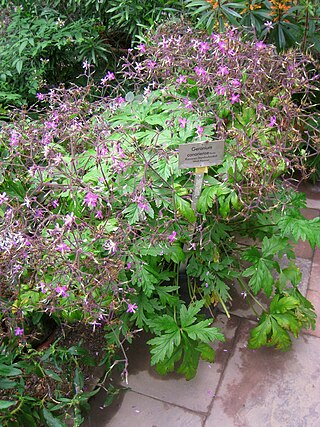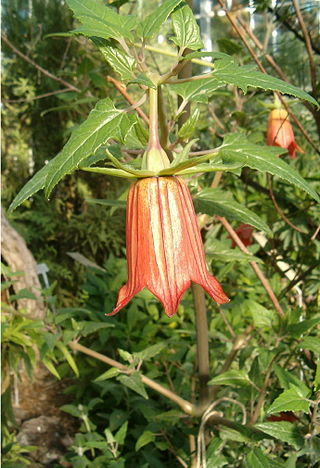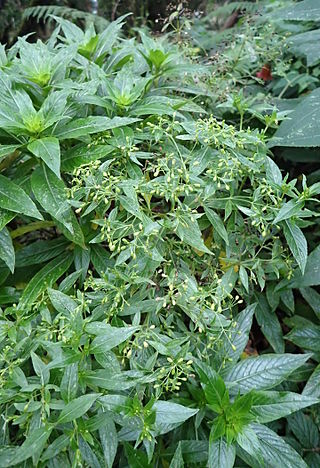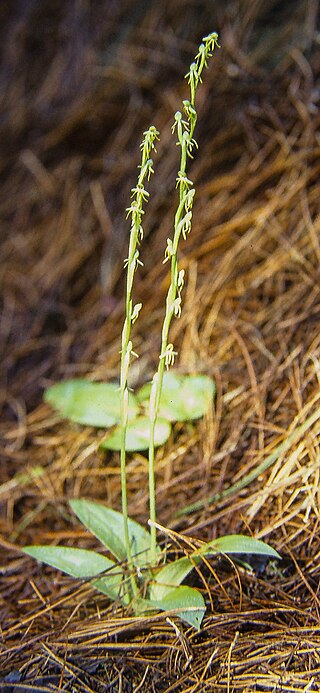
Gran Canaria, also Grand Canary Island, is the third-largest and second-most-populous island of the Canary Islands, an archipelago off the Atlantic coast of Northwest Africa and is part of Spain. As of 2023 the island had a population of 862,893 that constitutes approximately 40% of the population of the archipelago. Las Palmas de Gran Canaria, the capital of the island, is the biggest city of the Canary Islands and the ninth of Spain.

La Palma, also known as La isla bonita and historically San Miguel de La Palma, is the most northwesterly island of the Canary Islands, Spain, which is a Spanish autonomous community and archipelago in Macaronesia in the North Atlantic Ocean. La Palma has an area of 708.32 square kilometres (273.48 sq mi) making it the fifth largest of the eight main Canary Islands. The total population at the start of 2023 was 84,338, of whom 15,522 lived in the capital, Santa Cruz de La Palma and 20,375 in Los Llanos de Aridane. Its highest mountain is the Roque de los Muchachos, at 2,426 metres (7,959 ft), being second among the peaks of the Canaries after the Teide massif on Tenerife.

Maspalomas is a tourist resort in the south of the island of Gran Canaria, Canary Islands, stretching from Bahía Feliz in the east to Meloneras in the west, including the resort towns of San Agustín, Playa del Inglés and San Fernando. Maspalomas constitutes the southernmost part of the municipality of San Bartolomé de Tirajana, and of the island.

Echium wildpretii is a species of flowering plant in the family Boraginaceae. It is an herbaceous biennial plant that grows up to 3 m (10 ft) in height. The species is endemic to the Canary Islands, and is found mainly in the national park surrounding Mount Teide in Tenerife. The subspecies E. wildpretii subsp. trichosiphon occurs at high altitudes on the island of La Palma. The common names are tower of jewels, red bugloss, Tenerife bugloss or Mount Teide bugloss.

Argyranthemum frutescens, known as Paris daisy, marguerite or marguerite daisy, is a perennial plant known for its flowers. It is native to the Canary Islands. Hybrids derived from this species are widely cultivated as ornamental plants in private gardens and public parks in many countries, and have naturalized in Italy and southern California. There are many cultivars, but the most common has white petals.

Geranium reuteri, the giant geranium, is a species of flowering plant in the family Geraniaceae, endemic to the Canary Islands. It was known for many years under the name Geranium canariense. In Spanish, it is called pata de gallo.

Globularia salicina is a shrub native to the archipelago of Madeira and to the central and western Canary Islands.

Canarina canariensis is a species of flowering plant in the bellflower family Campanulaceae, commonly known as the Canary Island bellflower, and known locally as bicácaro.

Sideritis barbellata is a small erect shrub, laxly branched, whitish-yellow tomentose. Leaves are generally green-glabrescent above, ovate-lanceolate, the base cordiform. Inflorescences are erect, verticillasters, branched with 1–3 series of sterile bracts subtending the branches, and with slightly curved flowers.

Sonchus bornmuelleri, or Bornmueller's sow-thistle, is a plant endemic to the Canary Island of La Palma.

Sonchus acaulis is a plant species in the tribe Cichorieae within the family Asteraceae. It is found only on the Canary Islands of Gran Canaria and Tenerife.

The Guayadeque ravine, in Spanish Barranco de Guayadeque, is a ravine-type valley located on the Spanish municipalities of Ingenio and Agüimes, in the province of Las Palmas on Grand Canary island, off the coast of Morocco.

Phyllis nobla is a small, glabrous or pubescent subshrub in the family Rubiaceae.

Erysimum scoparium is a species of flowering plant in the family Brassicaceae, native to the Canary Islands. It is a shrubby species of wallflower with purplish flowers found at high altitudes.

Sonchus congestus is a species of flowering plant in the family Asteraceae. It is endemic to the Canary Islands.

Euphorbia lamarckii is a species of flowering plant in the family Euphorbiaceae, native to the western Canary Islands. It resembles Euphorbia regis-jubae, with which it has been confused. Both have been called Euphorbia obtusifolia.

Euphorbia regis-jubae is a species of flowering plant in the family Euphorbiaceae, native to the eastern Canary Islands, western Morocco, north-western Western Sahara. In Spanish, it is known as tabaiba morisca. It has often been confused with Euphorbia lamarckii. The specific epithet regis-jubae, meaning 'King Juba's euphorbia' honours the king's contributions to natural history and his role in bringing the genus to notice. The palm tree genus Jubaea is also named after Juba.

Habenaria tridactylites, the Canary three-finger orchid, is a species of flowering plant in the family Orchidaceae, native to the Canary Islands. It was first described by John Lindley in 1835.

Pericallis echinata is a species of flowering plant in the family Asteraceae. It is native to Tenerife in the Canary Islands.

Bosea yervamora is a shrub native to the Canary Islands, up to 3 m tall with greenish slender branches. Leaves up to 7 cm long, ovate, lanceolate, alternate, short stalked, without hair. Flowers short terminal, arising from the axil of the leaf, indefinite inflorescences, greenish with two membranous, dry modified leaves at the base of the stem. Fruits greenish black turning pink when ripe, about the size of a small pea.


























